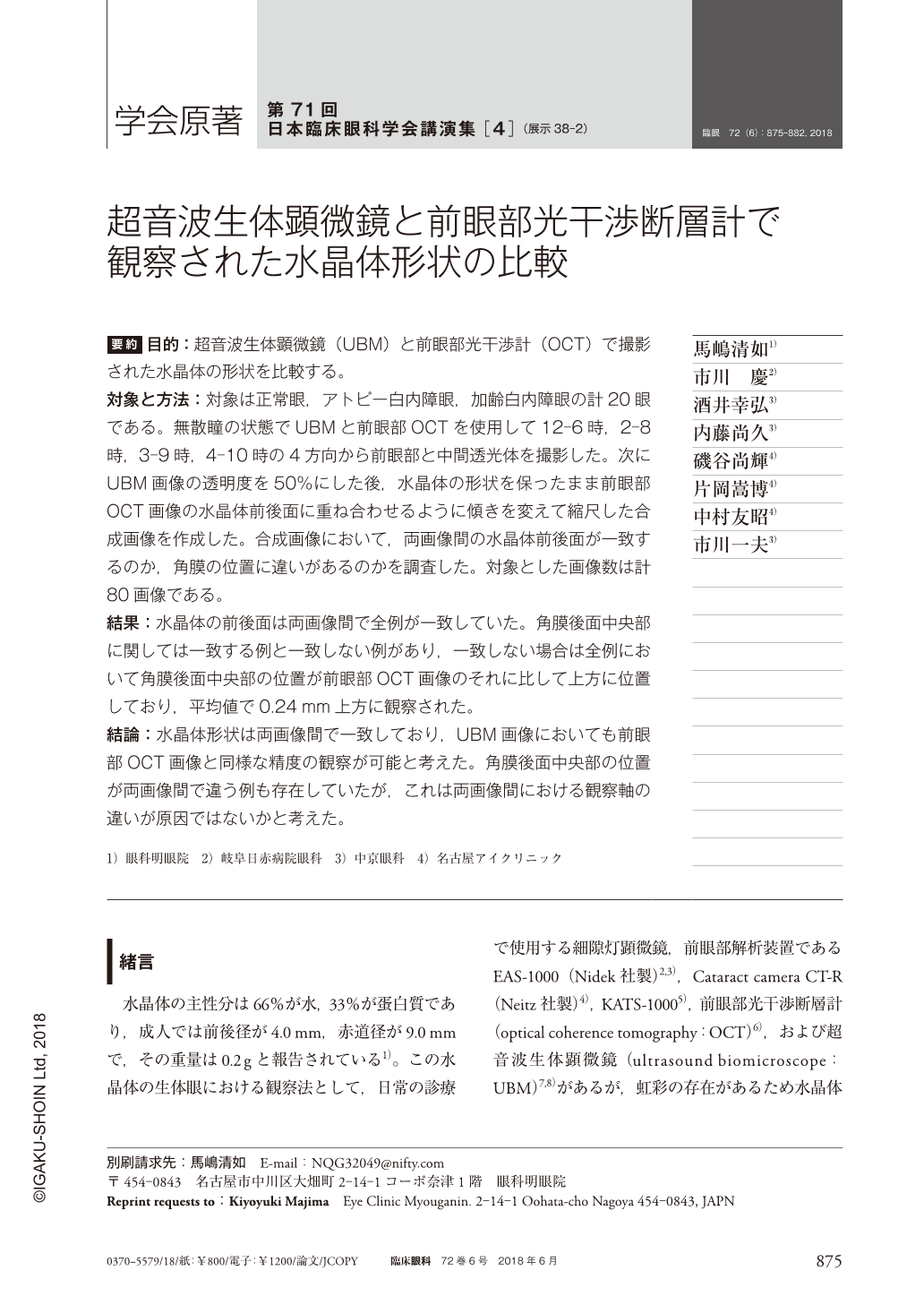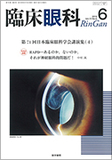Japanese
English
- 有料閲覧
- Abstract 文献概要
- 1ページ目 Look Inside
- 参考文献 Reference
要約 目的:超音波生体顕微鏡(UBM)と前眼部光干渉計(OCT)で撮影された水晶体の形状を比較する。
対象と方法:対象は正常眼,アトピー白内障眼,加齢白内障眼の計20眼である。無散瞳の状態でUBMと前眼部OCTを使用して12-6時,2-8時,3-9時,4-10時の4方向から前眼部と中間透光体を撮影した。次にUBM画像の透明度を50%にした後,水晶体の形状を保ったまま前眼部OCT画像の水晶体前後面に重ね合わせるように傾きを変えて縮尺した合成画像を作成した。合成画像において,両画像間の水晶体前後面が一致するのか,角膜の位置に違いがあるのかを調査した。対象とした画像数は計80画像である。
結果:水晶体の前後面は両画像間で全例が一致していた。角膜後面中央部に関しては一致する例と一致しない例があり,一致しない場合は全例において角膜後面中央部の位置が前眼部OCT画像のそれに比して上方に位置しており,平均値で0.24mm上方に観察された。
結論:水晶体形状は両画像間で一致しており,UBM画像においても前眼部OCT画像と同様な精度の観察が可能と考えた。角膜後面中央部の位置が両画像間で違う例も存在していたが,これは両画像間における観察軸の違いが原因ではないかと考えた。
Abstract Purpose:To compare the shape of crystalline lens as imaged by ultrasound biomicroscopy(UBM)and optical coherence tomography(OCT).
Cases and Method:This study was made on 20 eyes, including normal eyes, eyes with atopic cataract, and eyes with age-related cataract. The anterior eye and optic media were imaged using non-mydriatic UBM and anterior OCT along vertical and horizontal directions, 2 to 8 and 4 to 10 o'clock directions. The transparency level of UBM was set at 50% to create composite images of the lens and the anterior ocular segment. The composite images were examined as to whether the anterior and posterior surfaces of the lens coincided in both imaging modalities, and whether there was any change in the position of the cornea.
Results:The anterior and posterior surfaces of the lens coincided in UBM and OCT images. Posterior surface of the cornea coincided in some cases only. In eyes that failed to coincide, the central cornea was located by a mean of 0.24 ram superior to the UBM than OCT images.
Conclusion:UBM and OCT images showed similar accuracy regarding the shape of the lens. Some cases showed varying position of the posterior corneal surface in two imaging modalities depending on different angle of observation.

Copyright © 2018, Igaku-Shoin Ltd. All rights reserved.


